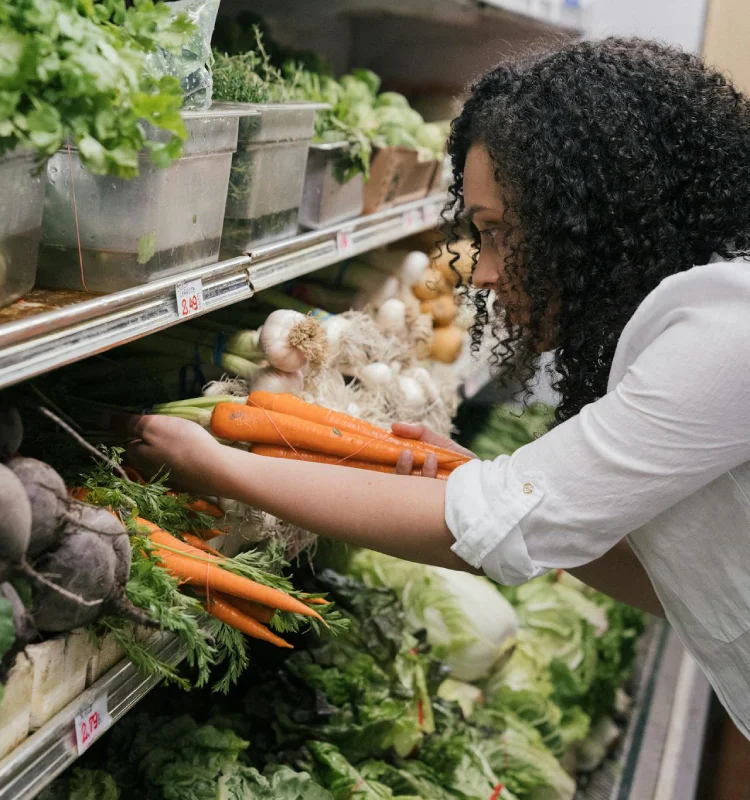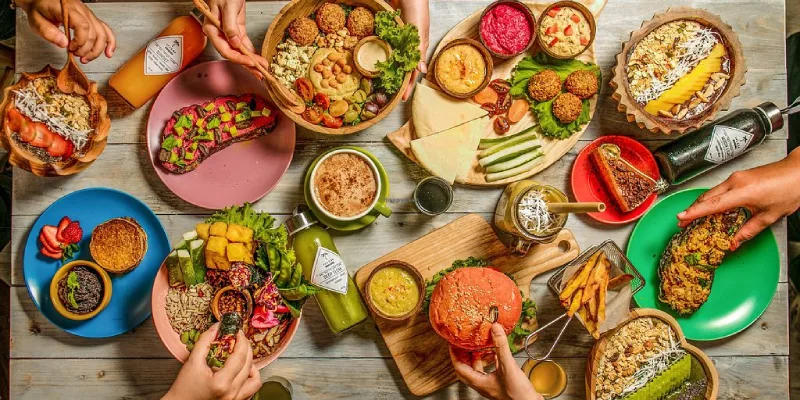Ever noticed vegan restaurant prices are higher than regular spots? You’re not alone.
Many wonder why plant-based meals cost more. Is it just a trend, or is there more to it?
From premium ingredients to ethical business practices, we’ll break down the real reasons behind the price tag—and why it’s often worth it.
1. Premium Ingredients = Higher Costs

Vegan restaurants prioritize fresh, organic, and locally sourced ingredients. Unlike processed foods used in many traditional restaurants, organic produce requires more labor and has higher farming costs.
Buying from small farms promotes sustainability but comes at a premium.
Ingredients like cashew cheese and tempeh are less commonly distributed, so they are pricier.
Many restaurants that are vegan also avoid synthetic preservatives with the outcome being shorter shelf lives and regular resupply. It is directly impacting the cost of the menus.
When you dine at a vegan restaurant, you’re paying for garden-fresh, healthier ingredients—not just a meal, but a higher standard of food.
2. Specialty Ingredients Come at a High Price

Vegan cooking isn’t just about removing meat and dairy—it requires unique ingredients that can be costly.
Nutritional yeast, miso, cashew cheese, and tempeh are essential in plant-based cuisine but aren’t as mass-produced as traditional ingredients. This limited availability makes them more expensive.
Superfoods like spirulina, goji berries, and hemp seeds add nutritional value but also come with a premium price tag.
Since these ingredients are not commonly stocked in local grocery stores, restaurants must source them from specialty suppliers, increasing costs.
Many vegan spots cater to gluten-free, soy-free, and nut-free diets. This means they need alternative ingredients like almond flour, coconut aminos, and pea protein. These substitutes cost more than regular options.
Additionally, plant-based dairy replacements—like oat, almond, and cashew milk—cost more than traditional milk due to higher production expenses.
All these factors add up, making vegan restaurant meals more expensive than their non-vegan counterparts.
3. Preparation Takes Time and Time is Money

Vegan meals take more time and effort to prepare. Without meat or dairy, chefs rely on marinating, fermenting, and blending to create rich flavors.
Making cashew cheese, pressing tofu, or slow-roasting vegetables requires extra steps compared to conventional cooking.
Skilled plant-based chefs command higher wages due to their specialized knowledge of nutrition and alternative cooking techniques.
Labor-intensive methods, like hand-making veggie patties or crafting dairy-free sauces, add to the kitchen workload.
Vegan restaurants prioritize fresh ingredients, unlike fast food. This means more chopping, seasoning, and layering of flavors. The extra time and skill needed make meals more high-priced.
4. Commitment to Sustainability

Many vegan restaurants prioritize sustainability, which adds to costs. They use biodegradable packaging, compostable utensils, and eco-friendly containers—materials that cost more than plastic alternatives.
Sourcing fair-trade, organic, and locally grown ingredients ensures ethical farming practices but comes at a premium.
Additionally, many vegan spots also pay employees higher wages. In contrast, big brands often cut labor costs.
Plant-based restaurants invest in sustainability for the planet’s future. The higher price covers not just the food but also the ethical choices behind it.
5. Niche Market Challenges

Vegan restaurants serve a smaller market than mainstream eateries, leading to higher costs.
Unlike large chains that buy in bulk at discounted rates, plant-based spots often purchase specialty ingredients in smaller quantities, making them more expensive.
With fewer customers, these restaurants can’t rely on high-volume sales to offset costs. Many operate in boutique locations with higher rent per square foot, further raising expenses.
Since veganism is still growing, so supply chains for plant-based products are limited. This causes price fluctuations.
As a result, running a vegan restaurant costs more, which impacts menu prices.
6. Healthier Food = Higher Price

Vegan meals are often packed with nutrient-dense, whole foods that support better health. Fresh vegetables, nuts, seeds, and superfoods provide essential vitamins and minerals but cost more than processed ingredients.
Unlike fast food, which relies on cheap fillers, plant-based dishes emphasize quality over quantity. Organic, non-GMO, and preservative-free foods have higher production costs, which get passed to consumers.
Eating vegan is not simply about excluding animal products—it’s about embracing a healthy way of living.
With less cholesterol and fewer unhealthy additives, the meals provide a lifetime of healthy gains that justify the slightly increased cost to your well-being.
7. Innovative Cuisine Takes Creativity

Vegan chefs innovate constantly by creating innovative, mouth-watering meals out of plant ingredients. It is a time and skill-guzzling exercise to craft plant equivalents of meat, cheese, and milk.
Compared to traditional cooking, plant cooking is built upon innovative cooking techniques like fermentation, dehydration, and molecular gastronomy.
Dishes like jackfruit “pulled pork,” cashew-based cheeses, and mushroom “scallops” aren’t just simple swaps—they’re culinary innovations requiring extensive testing.
Since vegan food lacks mainstream templates, chefs must develop new recipes from scratch.
This level of creativity, research, and artistry adds value, making the dining experience more than just a meal—it’s a showcase of plant-based culinary excellence.
8. Rising Demand = Rising Costs
As plant-based diets gain popularity, the demand for vegan ingredients has surged. While this growth is great for the movement, it also drives up prices, especially for specialty items like pea protein, oat milk, and plant-based meats.
In cities where vegan dining is trendy, restaurants can charge more due to high demand. Limited suppliers and increased competition for quality ingredients further contribute to rising costs.
Until production scales up to meet demand, plant-based foods will remain pricier. The growing interest in veganism ironically makes dining out more expensive—for now.
9. Ethical Business Practices Add Value
Vegan restaurants tend to have a sense of ethics to them, with ingredients that are fairly traded to employees being paid a fair wage.
In contrast to profit-driven fast-food restaurants, they are concerned with being sustainable, treating animals well, and giving back to the community.
Supporting small farms, conserving supplies, and being cruelty-free all cost a little more. It’s not about the food at a vegan restaurant; you’re investing in a company that cares about people, the earth, and ethics.
Conclusion
Vegan restaurant prices reflect more than just food—they represent quality, sustainability, and ethics.
From fresh-premium ingredients to skilled chefs and eco-friendly practices, every cost has a purpose.
While plant-based dining may be pricier, it’s an investment in health, the environment, and ethical business. Next time you order, remember—you’re paying for more than just a meal.

